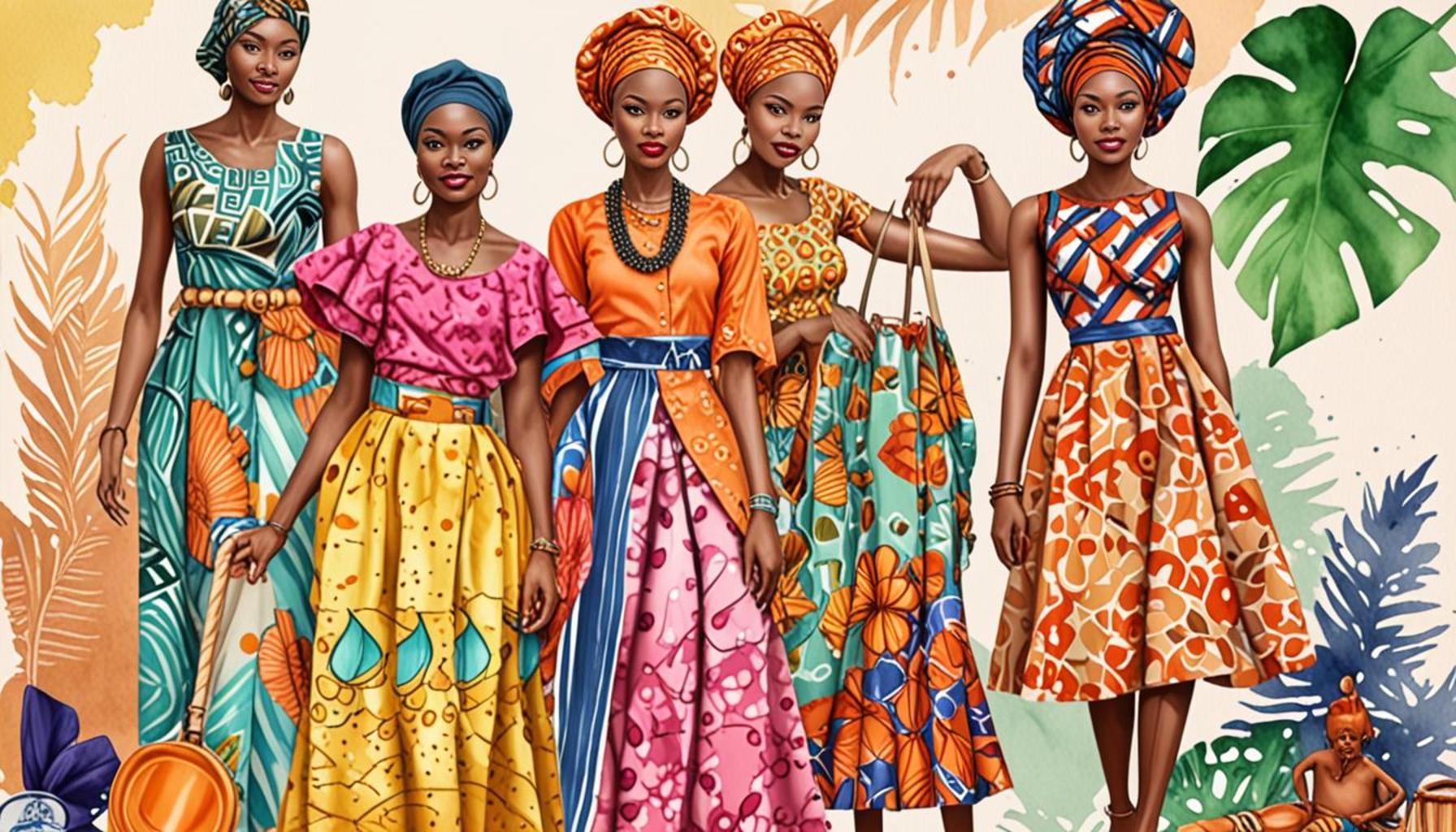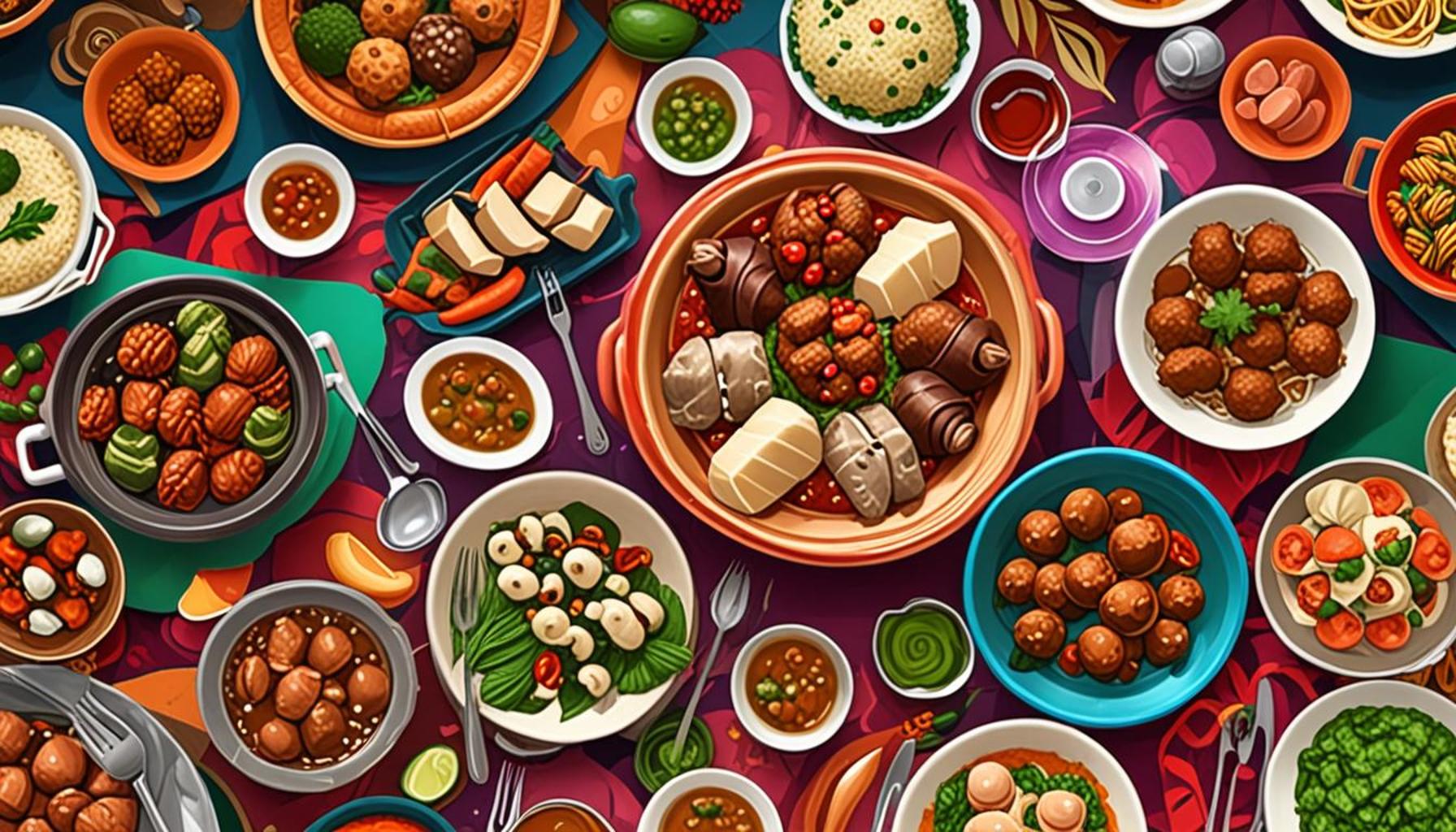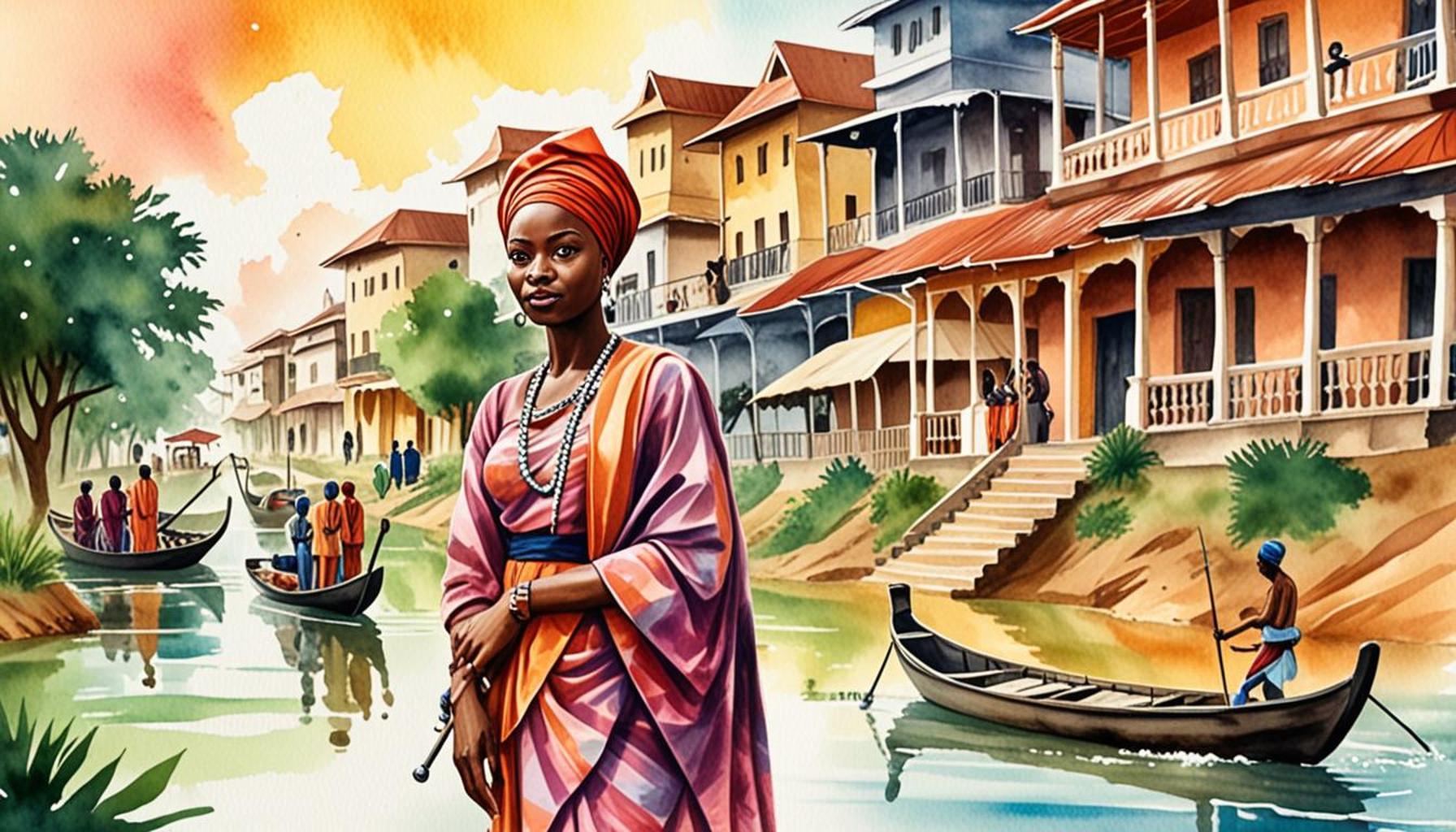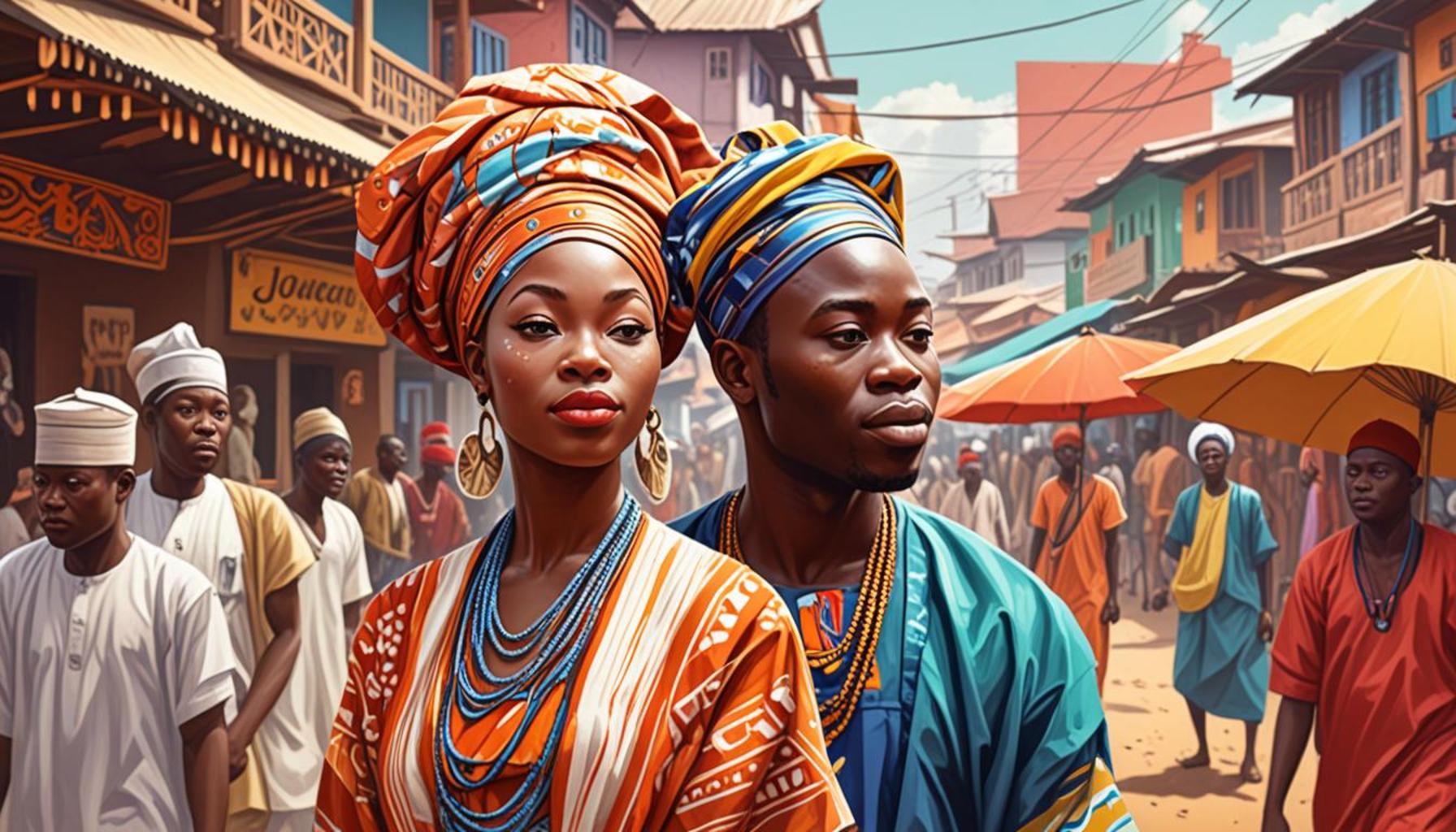Clothing Traditions: An Itinerary through Fashion and Lifestyles in Nigeria

The Cultural Significance of Fashion in Nigeria
Nigeria’s clothing traditions form a kaleidoscope of styles that resonate with the nation’s rich cultural heritage and significant history. Each region of Nigeria showcases its unique flavor through dress, influenced by factors such as geography, climate, and social interactions. As you navigate from the bustling streets of Lagos to the tranquil rural communities of the North, you will find that fashion is not merely about aesthetics; it is a reflection of identity, history, and social status.
Key Influences in Nigerian Fashion
- Ethnic Diversity: With over 250 ethnic groups, Nigeria is a tapestry of myriad clothing traditions. Each group has developed its styles, reflective of their values and customs. For instance, the Yoruba people are known for the traditional Aso Oke fabric, often worn during significant events such as weddings and religious ceremonies. Similarly, the Igbo people wear colorful George fabric, characterized by vibrant animal and floral designs, which are often seen during cultural festivals.
- Modern Trends: Today, Nigerian fashion is marked by a fusion of indigenous styles and global influences. Urban areas, particularly Lagos, are hubs for creative fashion designers who blend local fabrics with contemporary cuts and styles. The rise of Fashion Week in Lagos highlights this trend, showcasing designers who incorporate Western fashion elements while celebrating traditional aesthetics. The likes of Deola Sagoe and Tiffany Amber exemplify this cultural synthesis, drawing both local and international attention.
- Occasion and Purpose: In Nigeria, clothing serves specific roles depending on the occasion. Traditional attire is meticulously chosen for events like weddings, naming ceremonies, and cultural festivals. For instance, at a typical Yoruba wedding, attendees often don elaborate gele headwraps and beautifully patterned dresses, each piece symbolizing respect and community ties. Meanwhile, everyday wear might consist of simpler, more comfortable garments like the Buba and Isi Agu, highlighting the blend of practicality and tradition.
At the heart of Nigerian clothing traditions lies a vibrant palette of colors, rich textures, and the skillful craftsmanship of local artisans. Fabrics like Aso Oke, Ankara, and Adire not only serve as clothing but also embody stories that define community identities. Each weave tells a tale of heritage, reflecting the environment, the hand that crafted it, and the purpose it serves.
As you delve deeper into Nigeria’s clothing landscape, you’ll uncover intricate details about regional textiles, adornments, and the stories that persist through generations. This exploration invites us to appreciate not just the beauty of Nigerian fashion, but also its profound role in shaping the social and cultural dynamics of this vibrant nation.
YOU MAY ALSO LIKE: Read read another article
Regional Variations in Traditional Attire
As you traverse the diverse landscapes of Nigeria, one cannot help but notice the regional variations that define traditional attire. Clothing in Nigeria is an expression of cultural identity, and each region tells its own unique story through its garments. From the vibrant textiles of the South to the intricate styles of the North, the variety is as expansive as the nation’s people.
The Southern Influence
In the southern regions, particularly among the Yoruba and Ijaw peoples, fashion is characterized by colorful patterns and rich fabrics. The Yoruba’s Aso Oke, which translates to “top cloth,” is a handwoven fabric often distinguished by its horizontal stripes and bold designs. Traditionally worn during significant ceremonies, Aso Oke represents pride and craftsmanship, making it a much-coveted attire during weddings and festive events.
Likewise, the Ijaw people celebrate the beauty of their culture through the vibrant George fabric, noted for its intricate embroidery and bold colors. This fabric is a staple during cultural festivals, especially the Ijaw Day celebrations. Accessories like the “head tie” or gele add glamour and play a key role in women’s fashion. It is not uncommon to see women skillfully wrapping these headpieces, transforming them into statements of elegance.
The Northern Elegance
Moving northwards, the fashion narrative shifts dramatically. The northern regions, with their distinct cultural heritage, showcase attire that is not just beautiful but functional. Traditional outfits like the Babanriga, a flowing robe worn by men, symbolize status and are often worn during significant religious and cultural events. The Babanriga is typically made from lightweight fabrics to accommodate the hotter climate and features intricate embroidery primarily around the neck area.
Women in northern Nigeria often adorn themselves in richly embroidered gowns known as Hausa dresses, paired with colorful scarves. Fabrics like adire, a tie-dyed cloth originating from the Yoruba culture that has transcended into northern fashion, are also prevalent. Adire’s artistic patterns are not only visually appealing but carry meanings that reflect spirituality and heritage.
Contemporary Fusion and Celebration
As global influences seep into Nigerian culture, contemporary designers are reinventing traditional attire, creating lines that marry modern fashion with ethnic heritage. Tailors and fashion houses are increasingly experimenting with bold cuts and integrating globally recognized styled clothing, leading to a dynamic blend that respects tradition while embracing modernity.
- Heritage Clothing: This includes garments like Aso Ebi, which are often worn to denote solidarity among family and friends during ceremonies.
- Ready-to-Wear Collections: Designers are producing ready-made attire that features traditional fabrics, making them accessible to younger generations.
- Seasonal Trends: Festivals like the annual Lagos Fashion and Design Week are platforms where traditional and contemporary designs coalesce, celebrating the richness of Nigerian culture.
In essence, Nigeria’s varied clothing traditions encapsulate an identity woven from threads of history, geography, and cultural significance. As you dive deeper into these traditions, you will not only discover the beauty of Nigerian fashion but also the rich tapestry of stories that bind its people together.
| Category | Key Features |
|---|---|
| Traditional Fabrics | Nigerian clothing often showcases natural fibers like cotton and silk, adorned with vibrant, intricate patterns that reflect cultural significance. |
| Cultural Significance | Clothing in Nigeria is a visual narrative of heritage, representing various ethnic groups and often used during festivals and special ceremonies. |
The diverse clothing traditions in Nigeria are a reflection of the country’s rich tapestry of cultures and ethnicities. Each community has its unique styles and garments, which serve not only aesthetic purposes but also a strong cultural identity. For instance, the bright and bold adire fabrics are synonymous with Yoruba culture, showcasing tie-dye techniques passed down through generations. Meanwhile, the elaborate beadwork of the Ibo people signifies not just beauty but status within the society.Additionally, the significance of clothing transcends mere fashion; it plays a crucial role in ceremonies and rites of passage. Traditional attire is often worn during weddings, naming ceremonies, and festivals, making each garment a storytelling element of Nigeria’s diverse history. Understanding these clothing traditions offers deep insights into the various lifestyles that shape Nigeria today. Through such exploration, one can see how clothing not only adorns but also connects individuals to their roots, embodying hope, resilience, and unity.
RECOMMENDED: Check out this similar article
Clothing as a Reflection of Significant Life Events
In Nigeria, clothing serves as more than just a means of covering; it acts as a rich tapestry interwoven with the threads of personal and communal history. Each garment tells a story, encapsulating the essence of life’s pivotal milestones and communal celebrations. From the joyous occasions of weddings to the somber attire worn during funerals, clothing reflects the gravity of human experiences.
Celebratory Garments
Weddings in Nigeria stand as monumental celebrations, often accompanied by elaborate dressing rituals that highlight the significance of the event. The traditional wedding attire, known as Aso Ebi, is worn by close family and friends to signify unity and support for the couple. These garments are typically made from specific fabrics chosen to resonate with the couple’s theme, showcasing a stunning array of colors and designs. As a practice, guests will coordinate their attire, creating a visual symphony of fashion that beautifully reflects the couple’s heritage.
Moving beyond weddings, events like the Eyo Festival in Lagos present another exciting facet of clothing traditions. Participants don traditional white garments, known as “Eyo,” symbolizing purity and honor as they parade through the streets. This spectacle is not merely a form of clothing but an expression of spirituality and reverence for the ancestors, captivating both locals and tourists alike.
The Role of Clothing in Mourning
Conversely, clothing takes on an uncharacteristically somber role during periods of mourning. In many Nigerian cultures, traditional attire during funerals varies significantly among different ethnic groups. The Yoruba people, for instance, might opt for less colorful fabrics adorned with modest patterns, often in shades of white or black, as a mark of respect for the deceased. The attire may also incorporate elements that speak to the individual’s life, such as the use of specific colors that resonate with their personality or status.
Similarly, the Igbo tradition encourages the wearing of mourning attire that includes a long wrapper and blouse, adorned with particular symbols that signify respect and remembrance. This practice reflects the community’s collective grief and furthers social bonds, emphasizing the cultural significance tied to clothing.
Fashion and Gender Identity
Beyond life events, clothing in Nigeria plays a crucial role in defining gender identity and societal roles. Traditional attire often encapsulates what is expected of different genders within the community. For women, brightly colored wrappers and fitted blouses are commonly characterized as symbols of femininity and strength, especially in ceremonies. Similarly, men’s attire, such as the Fulani’s embroidered caps and flowing boubous, expresses masculinity and authority while adhering to communal standards.
As conventions evolve, younger generations challenge traditional gender norms through fashion. Designers increasingly create unisex clothing collections that defy stereotypes, promoting the idea that fashion serves as a personal expression transcending beyond traditional gender confines. Hence, contemporary Nigerian fashion is progressively embracing an inclusive narrative while still honoring its rich heritage.
The reflective nature of clothing in Nigeria reveals the depth of cultural connections and the stories woven into every fabric. As you explore these clothing traditions, you witness a vibrant narrative unfolding — one that celebrates individuality while acknowledging the collective essence of Nigerian life.
RECOMMENDED: Check out this similar article
Conclusion: The Vibrant Tapestry of Nigerian Clothing Traditions
As we journey through the diverse clothing traditions of Nigeria, it becomes evident that fashion is intricately woven into the social fabric of the nation. Each thread embodies a myriad of stories, cultural values, and the enduring spirit of communities. From the joyous celebrations of weddings marked by the vibrant hues of Aso Ebi to the solemnity of mourning attire reflecting profound respect and memory, clothing serves as a powerful medium of expression.
Moreover, clothing is not just a reflection of individual identity but a dynamic narrative that evolves with societal changes. The shift towards challenging traditional gender norms through inclusive fashion underscores the adaptability of cultural expressions. Designers are now fusing modern aesthetics with rich heritage, promoting a diverse narrative that appeals to both local and global audiences.
As we embrace contemporary trends while honoring age-old practices, it is crucial to recognize the significance of clothing as a repository of history and identity. By celebrating these traditions, we not only preserve cultural heritage but also foster a collective sense of belonging. To truly appreciate the depth of Nigerian fashion is to acknowledge its role in connecting people, transcending borders, and forging a shared identity amidst the vibrant tapestry of lifestyles in Nigeria. Let us continue to explore and engage with these inspiring traditions, ensuring that the stories embedded in each garment are passed down through generations, enriching our understanding of who we are as a nation.


